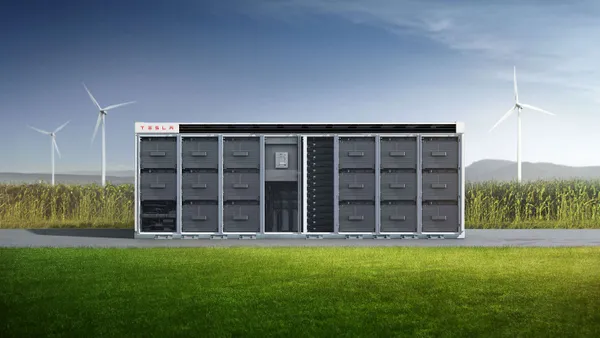Dive Brief:
-
Advanced Microgrid Solutions and the Inland Empire Utilities Agency (IEUA) in California have embarked on a project that combines energy storage with renewables at waste water treatment plants.
-
Announced last year, the project will use 3.65 MW of energy storage installed at six IEUA regional water-recycling facilities and pump stations.
- The agency says that project will save it 5% to 10% of its energy costs each year and help integrate its renewable resources, which include 3.5 MW of solar, 1 MW of wind and 2.8 MW of biofuel cell generation located at IEUA facilities.
Dive Insight:
Moving water takes a big bite out of municipal budgets, particularly in places like Southern California, which has to import so much of its water supplies. That makes water use a prime target for energy savings.
The California Energy Commission estimates that moving and treating of water, and the treatment and disposal of wastewater and the energy used to heat and consume water account for nearly 20% of the electricity consumed in the state.
In addition to existing solar and wind power, in 2010 IEUA installed the largest fuel cell system powered by renewable biogas in the world and lowered its energy consumption by nearly 25% with using energy efficiency measures. The agency also had the first public building in the nation to be awarded a LEED platinum rating.
The opportunity to reduce demand charges makes batteries especially attractive for water utilities. AMS inked a deal for 7 MW, 34 MWh of storage at the Irvine Ranch Water District last month, and in July the company secured $200 million in funding from Maquarie to construct 300 MWh of capacity resources and demand management for utilities and certain commercial, industrial water and university customers in southern California.













